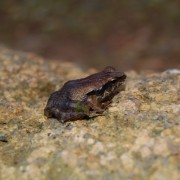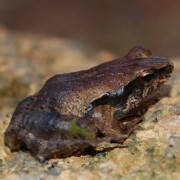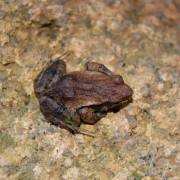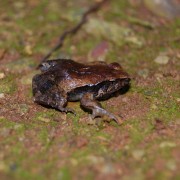Biodiversity
 Central Dwarf Frog
Physalaemus centralis | Bokermann, 1962
Central Dwarf Frog
Physalaemus centralis | Bokermann, 1962
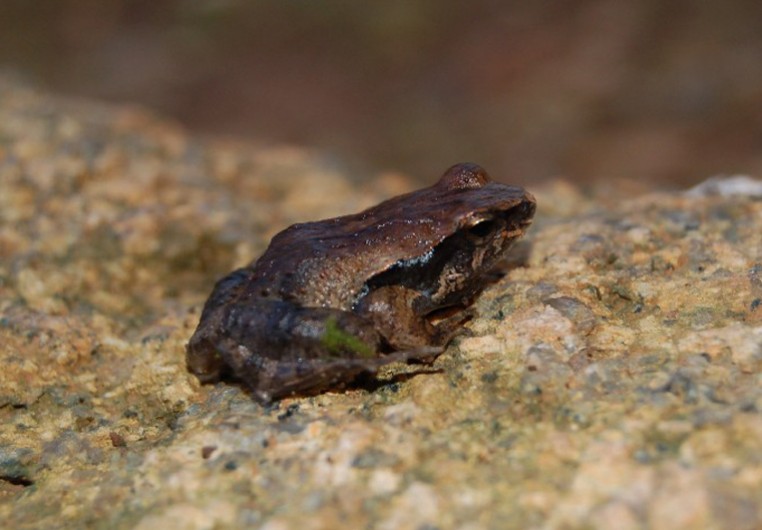
Characteristics: Small to medium-size species measuring about 2.0cm to 4.0cm in length. Its back can be dark with shades of brown, beige or brown, gray with irregular spots or stripes. Most individuals have the inner thighs and inguinal areas in colors ranging from orangish to reddish. Its belly is lighter, usually white, with dark spots in the neck in males, indicating the presence of vocal sacs. They closely resemble the Physalaemus cuvieri, often distinguished only by their vocalizations.
Distribution: This species occurs throughout South America, Southern Mexico, Northern Argentina and Northeastern Paraguay. In Brazil, it occurs in the states of Mato Grosso, Minas Gerais, and São Paulo.
Habitat: While having a broad distribution, it reproduces in open formations, such as fields, pastures, meadows and swamps, near human conglomerates.
Habits: Crepuscular, nocturnal, terrestrial, and aquatic. It prefers low vegetation (grasses) near streams, permanent and temporary wetlands and puddles of water.
Diet: Insects and arachnids.
Breeding: Oviparous and uses temporary accumulations of stagnant water to spawn in. Mating is dependent on rainfall, with reproductive activity decreasing during dry periods and with highly intense vocalization. Spawning is in the water. Eggs are laid in foam nests partially attached to land or on grasses.
UFRA: Species spotted in Wetlands with Herbaceous Plants, Wetlands with Riparian Forests and in Organic sugarcane fields. During the rainy season, they are found in large puddles formed on the edges and in the middle of flooded plots.




